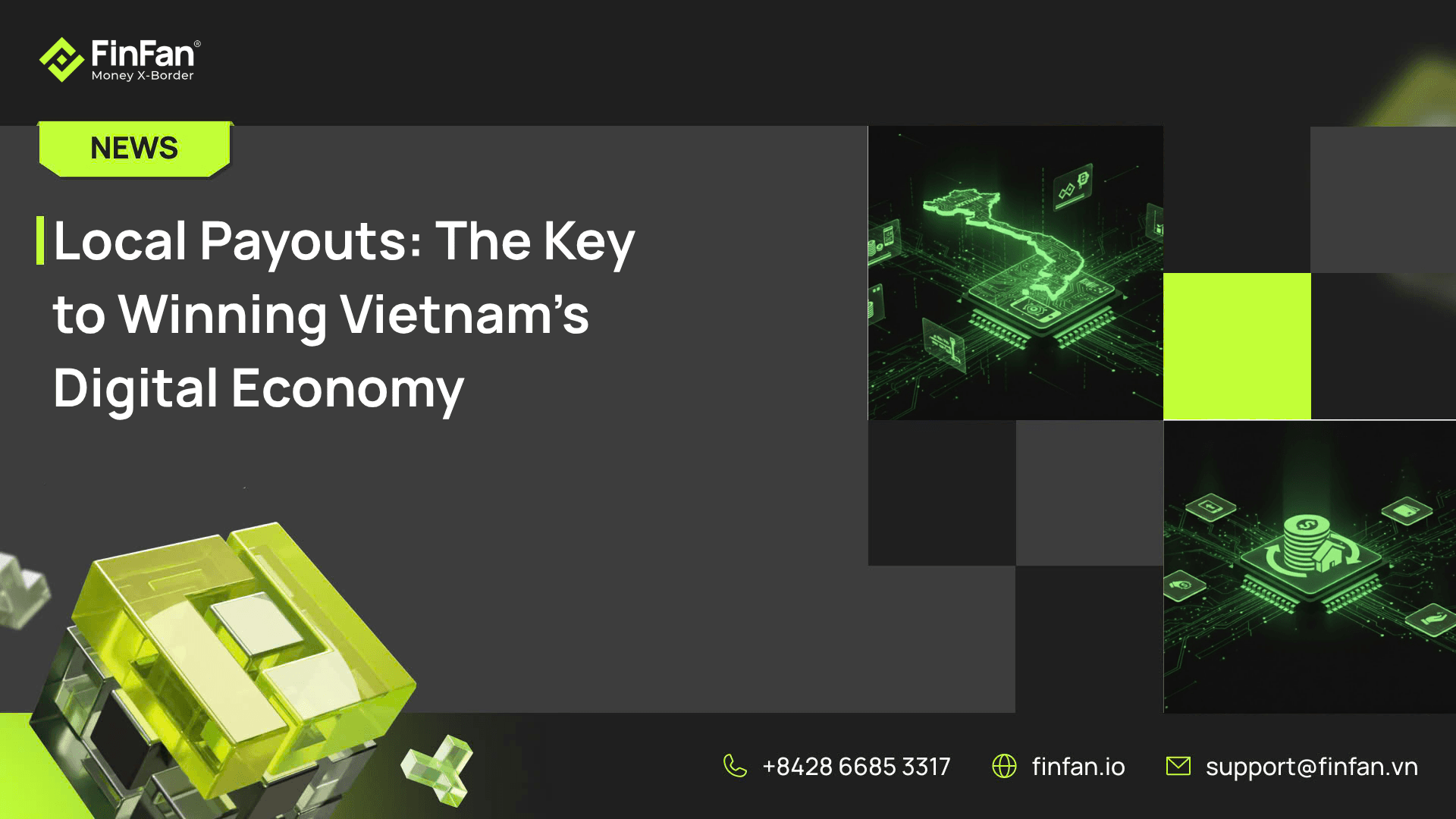All about cross-border payments

In this article, let's explore with FinFan the concept of cross-border payments and its various types in the most detailed manner.
What are cross-border payments?
What are the payments?
Payments are the transactions between payees (could be individual, companies, banking institutions) and payers (could also be individual, companies, banking institutions).
Why do cross-border payments appear and how huge is that market?
Cross-border payments appear when customers and providers live in different countries. According to the latest report in 2022 of Ernst & Young Global Limited, the global cross-border payment flows reached 156 trillion US dollars. That is one of the fastest-growing segments within the global payments ecosystem.
Example of cross-border payments and models of cross-border payments
The best example of cross-border payments come from e-commerce transactions. With globalization and digitalization, this segment has risen so fast and changed the way consumers around the world shop.
Nowadays, they can stay in their home with just a few taps on mobile phones to buy something from the other side of the planet. That brings the better opportunity for merchants to reach more customers in the international market.
However, to meet the needs of customers in different places, merchants must know the payment gateways that local people often use when making purchases.
The transaction when consumers pay for some physical products or services like that is C2B cross-border payments (from customers to businesses cross-border payments).
In the global market, it has other 3 models of cross-border payments:
- B2B cross-border payments happen when businesses have payments to each other for many reasons (could be business investments, wholesale payments, etc.).
- C2C cross-border payments take place when customers in one country have payments to other ones in another country (could be remittances, international peer to peer lending, etc.).
- B2C cross-border payments is the last type, they come from the companies’ need to transfer money to its employees as salaries, welfare; or when they want to give gifts or refunds their customers.
How do cross-border payments work?
The general concept of cross-border payments is simple.
- With the transaction between customers and shop for instance, the shops’ owners simply add a payment option to the final step of your purchase such as via a VISA debit/credit card, e-wallet or compatible payment gateway.
- With the transaction between customers each other, the senders only have to go to the cross-border money transfer service the transaction counters like MoneyGram to make money orders for recipients in their hometowns. Or even faster, they just need a few simple steps on the phone to be able to set up an online money transfer order to directly bank accounts or e-wallets of their relatives in their hometowns through some online cross-border money transfer like Remitly, SendWave, Paysend], etc.
- The same with B2B and B2C markets when business owners now can only with a few steps on their smartphones create money transfer orders for paying their employees’ salaries or welfare in different countries.
However, the back end of these activities is far more complex. International payment processing involves a change in currency, which means if senders and receivers use services of a correspondent banking network (CBN), they need to pay some additional fee for the transactions such as exchange rates, taxes, foreign transaction fees, bank accounts in each currency, and credit or debit cards’ interchange fees.
Those fees can be managed and reduced when both sending and receiving parties agree to use the service of the third party that will bring the back-end networks to enable interoperability within cross-border payments.
For example, with FinFan’s API integrated, the sender in the USA can with a few steps on the smartphone by using SendWaveapp send 5.000 USD directly to bank Vietnamese receiver’s bank account.
FinFan can also typically utilize an aggregator model. Aggregating payments reduces costs, as most cross-border fees are incurred as a fixed fee per transaction. Also, to enable real-time confirmation of payments, FinFan typically requires pre-funding of their sending partners as collateral. This funding by the sending partner allows back-end providers to credit the recipient's account in real time once the transaction is initiated.
*The aggregator business model is particularly applicable to transactions within the C2C, C2B, and B2C segments, which are typically of low value. Back-end networks can settle these transactions faster, cheaper, and with more transparency than those processed by CBNs.
Aggregator models are less successful within the B2B segment, where average transaction values are often higher than US$50,000. Ensuring the capacity to pre-fund such high values would require senders to significantly increase working capital requirements. These models also offer less potential to reduce costs, as the current unit economics for B2B transactions are better, due to the higher average value and fixed nature of fees. For these reasons, almost all high-value B2B cross-border payments are still processed through CBN’s.*
*Sourced by Ernst & Young Global Limited
Are there any challenges associated with cross-border payments?
Despite the benefits of cross-border payments, this industry is hard to gain the trust of clients who transfer and receive money because some hacking incidents occur during money transfer intermediates, placing clients at risk of losing all of the money they have sent or, worse, losing money in their accounts if their accounts are not sufficiently secured.
Therefore almost every region has its own set of regulations pertaining to the transfer of financial data and the companies that provide the back-end networks services must follow these rules and adjust the code accordingly.
This article was curated and authored by FinFan's market research and development team, alongside our marketing department.
About FinFan
FinFan is a cross-border embedded financial services company that focuses on mass disbursement, fund collection, card processing, IBAN, and digital APMs solutions, which can provide valuable input and integration on and for the same.
FinFan already integrated with almost the world's well-known MTOs, PSPs, switch and core fintech platforms as Money Gram, Thunes, Qiwi, Remitly, World Remit, Bancore, PaySend, Terrapay, Ria Money Transfer (Euronet), Dlocal, Ripple, TripleA, FoMo Pay, Wings, etc.
For more information, please contact us through:
🌐https://finfan.io
📞(+84) 2866 85 3317
✉ support@finfan.vn
LinkedIn: FinFan





